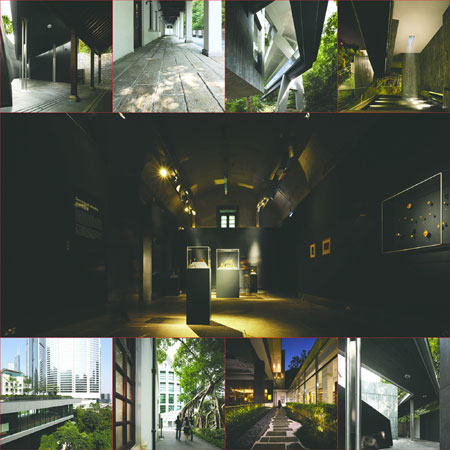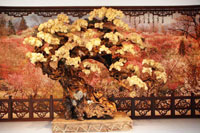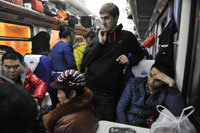Building innovation
 |
|
The new Asia Society Hong Kong Center, shown in these photos, combines the use of an old structure with sustainable design. Photos by Chan Yiu-Hung / For China Daily |
Hong Kong's boom and space crunch yield inventive designs and urban planning. Caroline Berg reports in New York.
Synthesis is crucial in Hong Kong's building and city planning.
"Since the 1960s, Hong Kong has seen rapid development, not only in quantity but also in quality as a result of the city's very unique constraints, including its geography and population density," says Jonathan Solomon, co-author of Cities Without Ground: A Hong Kong Guidebook.
Over the past century, Hong Kong has reclaimed about 2,800 hectares of Victoria Harbor to meet the ever-expanding city's needs.
What was once a land dotted with quaint fishing villages now boasts more skyscrapers that are at least 150 meters high than any other city in the world.
|
 |
In his book, Solomon argues Hong Kong is a novel model of urban spatial hierarchy.
Without a clear center or axis, the city's piecemeal development has resulted in networks that join a hodgepodge of elements - shopping malls, public transport, public parks and private lobbies - in multi-layered complexes.
"I think we take for granted in New York that the land is mostly flat and the city is set up like a grid," says Solomon, who is associate dean of Syracuse University's architecture school.
"It's a much more predictable network to navigate."
In Hong Kong, necessity often means building a branch, tunnel, bridge or rooftop.
"Hong Kong has no center or grid," Solomon says.
"Instead, it's a rich network of private and publicly owned places."
|
 |
Consequently, lines of ownership have blurred over the years and city planning has become a community effort, making collaboration and foresight imperative.
Solomon curated the exhibition Hong Kong at 15: Redefining the Public Realm that ended a six-week run at the Center for Architecture in New York on Jan 23.
The educator also conducted a discussion with Hong Kong-based architectural photographer Chan Yiu-hung (who also goes by the name Ah Hung) on examples of modern Hong Kong structures built through partnerships between US and local architects to illustrate the value of professional and cultural exchanges.
As Hong Kong works to define its postcolonial identity, factors to consider include heritage preservation, environmental conservation and waterfront development.


















